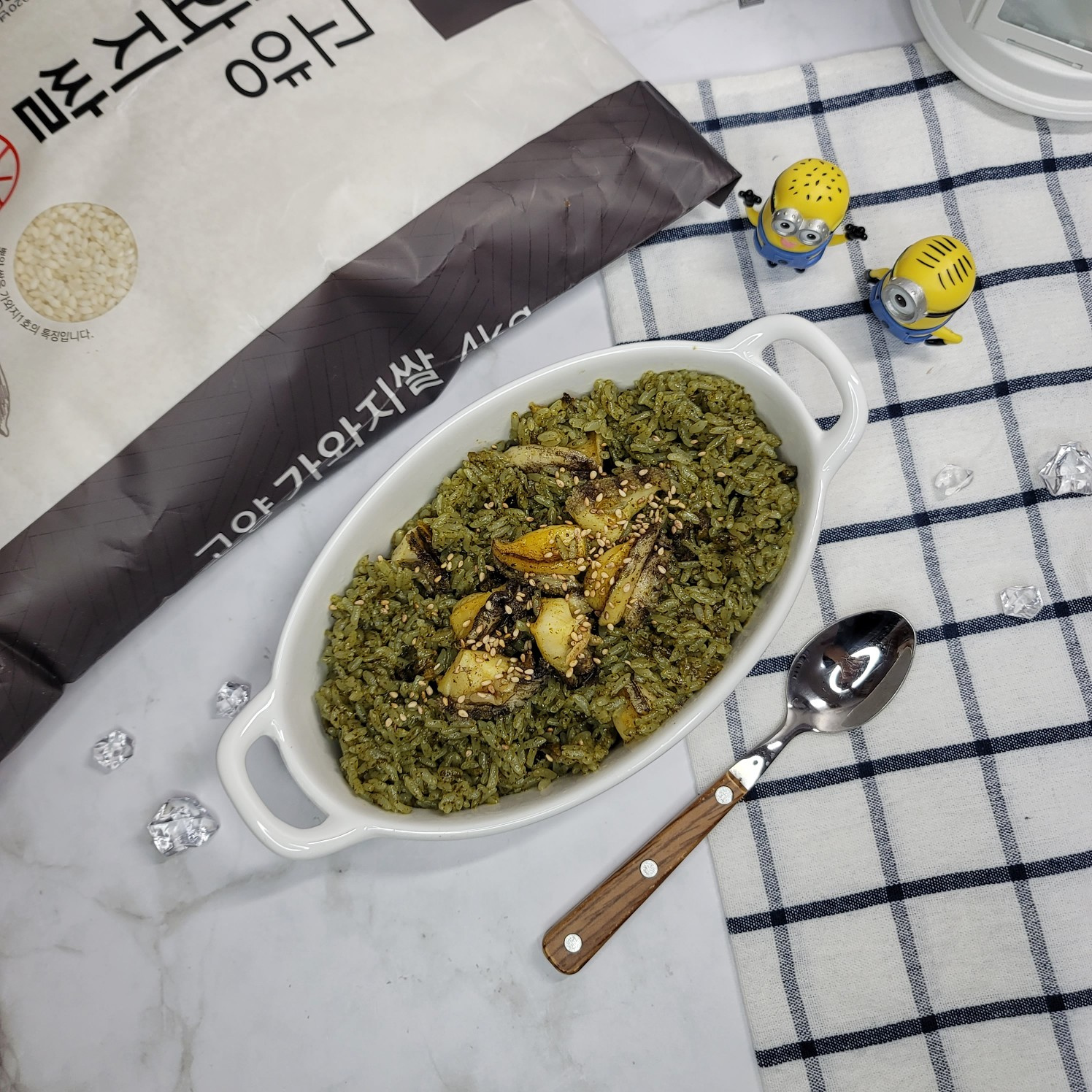Abalone Rice Cooked with Abalone Innards using Kawaji No.1 Rice
[Kawaji Rice No.1] Is this the real Abalone Rice?

This recipe deviates from traditional recipes using glutinous rice. Kawaji rice No.1 is naturally sticky, allowing us to achieve a chewy and satisfying abalone rice without glutinous rice.
Ingredients- Kawaji rice No.1: 1.5 cups (approx. 270g)
- Medium-sized abalones: 10 (about 7-8 are sufficient)
Seasoning- Abalone innards (geu): 10 abalones’ worth
- Salt: 1 Tbsp
- Sesame oil: 1.5 Tbsp
- Perilla oil (Deulgireum): 1.5 Tbsp
- Toasted sesame seeds: 0.5 Tbsp
- Abalone innards (geu): 10 abalones’ worth
- Salt: 1 Tbsp
- Sesame oil: 1.5 Tbsp
- Perilla oil (Deulgireum): 1.5 Tbsp
- Toasted sesame seeds: 0.5 Tbsp
Cooking Instructions
Step 1
First, let’s prepare the abalones! We have 10 medium-sized abalones ready. (You can use about 7 and still get a rich flavor.)

Step 2
Thoroughly scrub the abalones under running water with a toothbrush to remove any dirt or debris. Be sure to scrub the dark, rough areas until they turn white.

Step 3
See how the abalone flesh has turned white? Make sure to clean the wrinkled parts along the edges as well.

Step 4
Put on gloves, insert a spoon between the abalone shell and the meat along the rough side of the shell, and gently pry the abalone off the shell.

Step 5
Trim off the slightly dark part at the end of the abalone (about 0.5 cm). Then, press down firmly with your fingers to remove the abalone’s mouthparts and esophagus.

Step 6
It’s best to remove the mouthparts and esophagus entirely, as they contain the abalone’s excrement and can affect the taste.

Step 7
Carefully use scissors to cut out the abalone innards (called ‘geu’), being cautious not to puncture them.

Step 8
Once all abalones are cleaned, rinse the abalone meat briefly in cold water and store it in the refrigerator to maintain its freshness until ready to use.

Step 9
Finely chop the abalone innards with scissors. This step is crucial for ensuring the innards distribute evenly when mixed with the rice, preventing the rice grains from breaking.

Step 10
Rinse 1.5 cups of Kawaji rice No.1. This type of rice, though not glutinous, is naturally white and has a good stickiness, resulting in a chewy texture.

Step 11
Add the chopped abalone innards to the unsoaked rice and gently mix. Make sure to break up any clumps of innards and distribute them evenly among the rice grains. Be careful not to knead too vigorously, as this can break the rice grains!

Step 12
Transfer the rice mixed with innards to a pressure cooker. Add 1.5 Tbsp of perilla oil and 1.5 Tbsp of sesame oil, and sauté the rice. Stir continuously to prevent sticking.

Step 13
Use a wooden spatula to gently scrape the bottom of the pot while sautéing, ensuring the rice doesn’t stick or burn. Sauté until the rice grains become slightly translucent.

Step 14
Add water until it covers the rice by about 1 cm. Close the lid and bring to a boil over medium heat for 5 minutes. (Using high heat can cause the rice to burn.)

Step 15
While the rice is cooking, take the abalone meat out of the refrigerator and cut it into quarters.

Step 16
After 5 minutes of cooking, open the lid. The rice will be slightly undercooked. Add the quartered abalone pieces, 1 Tbsp of salt, and a little more water. Close the lid and cook for another 5 minutes over medium heat. Let it steam for 5 minutes after turning off the heat.

Step 17
Serve the finished abalone rice in a bowl. Sprinkle generously with toasted sesame seeds for a final touch of flavor and aroma.

Step 18
Notice how beautifully the abalone innards have colored the rice! It’s delicious on its own, but also pairs wonderfully wrapped in seaweed or served with fermented chives (buchu kimchi). This makes for a satisfying and flavorful meal, even on mornings when you lack appetite!



